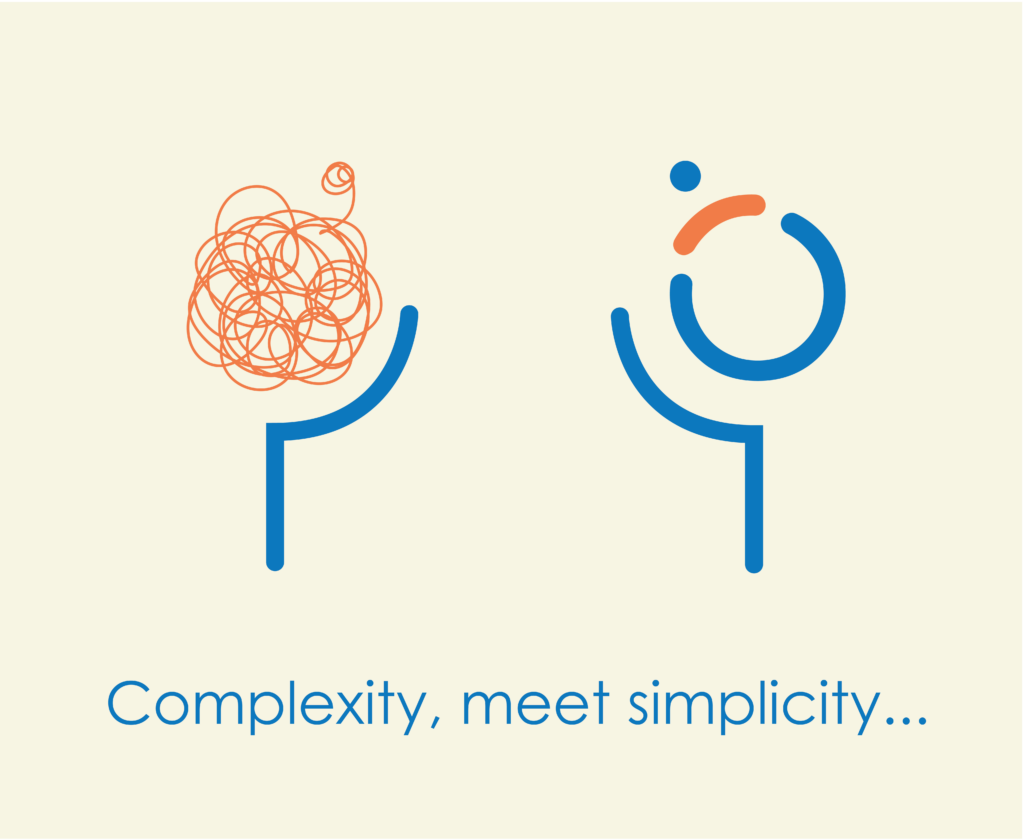
Complexity is not particularly difficult to recognize. Most of us know it when we see it. The hard part is putting it into words and being able to discuss it in a way that is productive. The lack of a widely used framework prevents us from really tackling complexity head on.
Our recent research on recognizing, unraveling, and replacing complexity has begun to shine a light on how leaders think about complexity and how they recognize complexity in their organizations.
During our research we specifically asked executives how they recognize complexity in their organization. At a high level, they all made reference to the lack of speed in decision making and desired outcomes as being evidence of complexity. The analysis of their answers created five indicators that led executives to their conclusion.
- Business performance – the ability to achieve results is a signal of a high performing organization. Of course, meeting your objectives does not necessarily mean that the business is not complex. On the other hand, continuously missing deadlines, key performance metrics, or even just your commitments are a signal that complexity is working its way through the organization.
- Ambiguity – The lack of clarity slows down decision making and increases the number of interactions between people and departments. It opens up the opportunity for misunderstanding, interpretation, and misalignment. Creating clarity and building alignment was seen as key to success to many of our interviewees.
- Employee engagement – Complexity creates a degree of frustration for employees. When complexity gets in the way employees find it difficult to understand why the organization doesn’t resolve the complexity and how the organization wants them to move forward. Complexity undermines individual employees in terms of understanding, empowerment, and learning.
- Meetings – The issue of meetings was raised by almost all of our interviewees. Too many meetings, meetings to prep for meetings, and too many people are involved are felt to be indicative of complexity. Many of us have been in back to back meetings and wondered when am I supposed to get any real work done? In addition, the number of organizational layers in a meeting was called out as creating complexity along with poor meeting discipline, as this creates ambiguity and reduces clarity.
- Accountability – The lack of accountability in organizations whether created by roles, organizational structure, or individual behavior adds to complexity. Siloed functions, combined with risk aversion, the fear of being wrong, and knowledge in the hands of the few are all indicators of complexity.
None of these indicators are evidence of complexity when experienced individually. It is when we notice multiple indicators that it becomes more of a signal than just a noise. Even then, the lack of a framework to discuss complexity makes it difficult for people to raise it as an issue, difficult for executives to take action, and difficult for the organization to adopt new ways of working together.
If you notice any of these indicators in your organization, or you have experienced them first-hand, please join the conversation and share your perspective.
Final Thought
As we discussed on LinkedIn recently, complexity is best evidenced by three things: how long it takes to get stuff done, how hard it is to do stuff, and how frustrating it is to be part of the process.
We’d love to hear from you.
